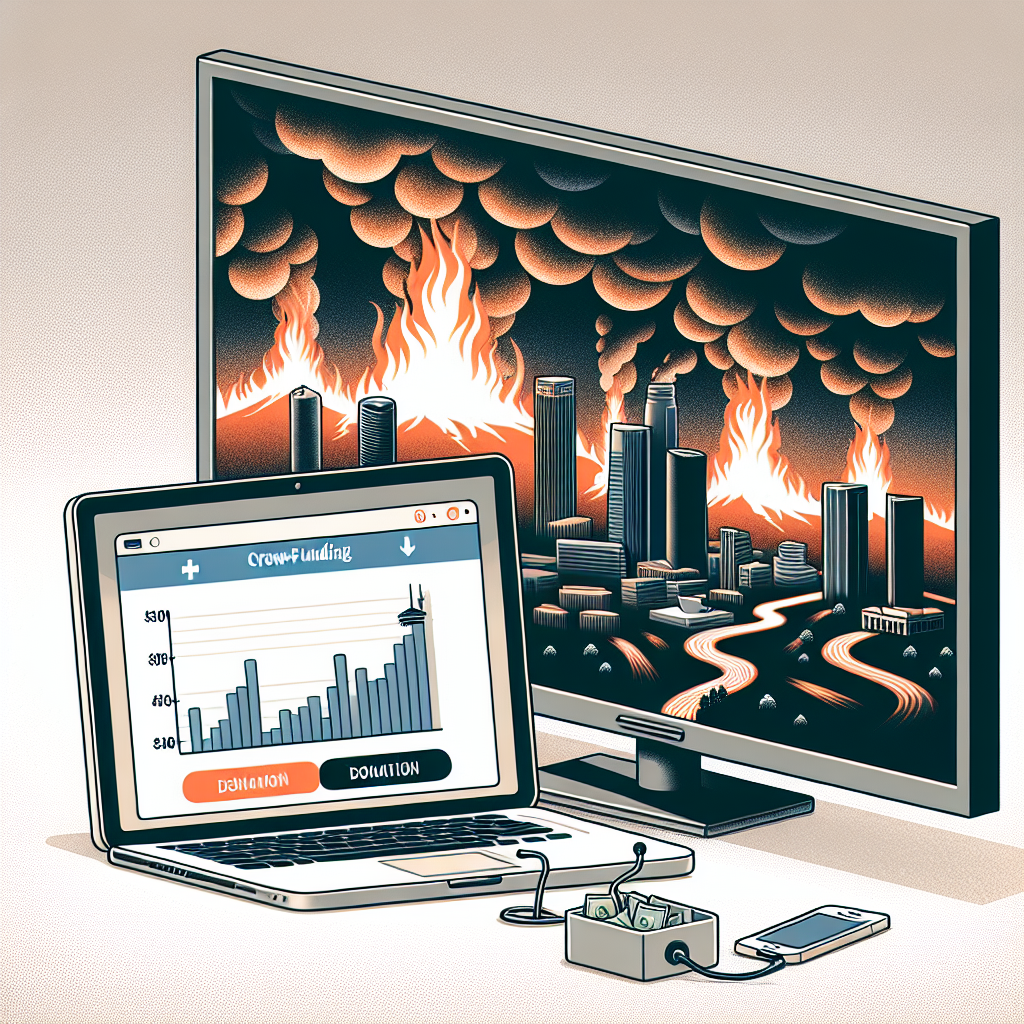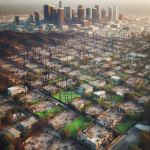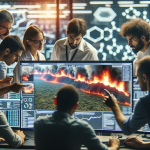Introduction: The Power of Media in Times of Crisis
Disasters, whether natural or man-made, often leave communities in turmoil. While government aid and logistical support play critical roles, it is the power of news media that frequently acts as an invisible, yet impactful, driver of disaster relief efforts. This dynamic was recently highlighted in the case of the Los Angeles (LA) fires. Through extensive media coverage, stories of destruction were brought into homes worldwide, igniting not just awareness but also action.
But how exactly does media coverage drive donations after disasters? What lessons can we learn from the LA fires? In this blog post, we’ll explore the relationship between media exposure, empathy, and subsequent charitable giving.
—
The Connection Between Media and Generosity
Media Plays a Role in Shaping Public Action
The media has always been a powerful tool for creating awareness. Stories of loss and heroism in the wake of disasters help humanize those affected, making their struggles relatable to wider audiences. This emotional connection often serves as the foundation for donations. According to experts, people are more likely to give when they feel a personal link to the situation.
Reach and Visibility Are Key
The scale of a media campaign often determines the level of help a cause receives. For instance, during the LA fires, widespread coverage by television networks, newspapers, and social media platforms ensured that the crisis remained in the public eye. Key ways media influences donations include:
- Immediate Visuals: Footage of homes engulfed in flames, displaced families, and heroic first responders can move people to donate without hesitation.
- Constant Updates: Repeated coverage across days and weeks keeps the crisis fresh in people’s minds, encouraging sustained support.
- Human Interest Stories: Stories that highlight individual victims, from heartbroken homeowners to innocent animals impacted by the fires, often touch hearts on a deeper level.
—
Lessons From the LA Fires: What Worked?
Social Media as a Catalyst
In the case of the LA fires, social media platforms served as crucial amplifiers of traditional media content. Platforms like Twitter, Facebook, and Instagram enabled those affected to share real-time updates, bringing unparalleled immediacy to the narrative. Influencers and celebrities also used their platforms to encourage donations, maximizing the reach of fundraising efforts.
The Role of Visual Empathy
Photos and videos shared online, especially on platforms like Instagram and TikTok, played a pivotal role in raising awareness. These visuals allowed people to experience the destruction firsthand, even if they were far from LA. Witnessing the devastation in real time fosters a sense of urgency, increasing the likelihood of immediate donations.
Collaborations Between Media and Nonprofits
Another factor that significantly contributed to donations after the LA fires was the collaboration between news outlets and nonprofit organizations. Many agencies were quick to publicize the links and methods for donating to relief efforts directly during their broadcasts. This seamless integration of information and action made it easier for viewers to contribute.
Examples that stood out included:
- News programs displaying QR codes on-screen that viewers could scan to donate.
- Local reporters featuring interviews with relief organizations and donors to emphasize the importance of giving.
—
How Media Coverage Inspires Empathy and Action
Crafting Emotional Connections
One of the most effective strategies used by media during the LA fires was the creation of emotional connections through storytelling. By showcasing the personal toll of the fires on families, businesses, and wildlife, the coverage painted a vivid and relatable picture.
The Psychology of Giving
Donation behavior often stems from an emotional trigger. Many media outlets capitalize on this by focusing on images and narratives that evoke sympathy. Consider the following outcomes:
- Empathy for Families: Seeing displaced families struggling to find shelter tugs at the heart. Coverage of parents holding children in evacuation centers sparks an instinct to help.
- Concern for Nature: Images of scorched forests and injured wildlife also resonate with those passionate about environmental conservation.
- Community Solidarity: Stories of neighbors helping neighbors, or firefighters going beyond the call of duty, inspire viewers to engage in the relief effort.
—
Challenges in Balancing Media Narratives
While media coverage is overwhelmingly positive in its ability to drive donations, there are nuances and challenges to consider. Over-saturation of disaster-related content can lead to fatigue or desensitization among viewers. Furthermore, sensationalized reporting risks painting an inaccurate picture of the situation while sidelining important issues such as long-term rebuilding efforts.
Striking the Right Balance
It’s important for media outlets to carefully strike a balance between urgent reporting and long-term awareness campaigns. To do this, they must consider:
- Maintaining consistent coverage without overwhelming audiences.
- Highlighting long-term needs, such as rebuilding schools or restoring infrastructure, rather than focusing solely on immediate destruction.
- Collaborating closely with nonprofits to ensure that donations are used effectively and showcase positive outcomes to maintain donor trust.
—
Takeaways for Future Disasters
How Organizations Can Use Media Coverage to Maximize Impact
The LA fires offer a valuable blueprint for how organizations can strategically use media to drive donations. Whether you’re a large relief agency or a small community group, understanding the media’s role in storytelling and advocacy is key to channeling public support effectively.
Tips for Maximizing Media-Driven Donations
- Strengthen Relationships With Reporters: Build strong working relationships with media outlets to ensure your organization gets featured in news stories.
- Create Shareable Content: Use social media to amplify your voice. Emotional, high-quality videos and images often go viral, increasing reach.
- Be Transparent: People want to know where their money is going. Share regular updates about how donations are being used to rebuild lives after the disaster.
- Partner With Influencers: Collaborate with celebrities and social media influencers who can use their platforms to spread the word.
—
Conclusion: Media as an Agent of Change
The spotlight the media placed on the LA fires demonstrated its power to mobilize people around the world. By telling compelling stories, offering consistent updates, and tapping into the public’s compassion, the media led to significant outpourings of support in a time of great need.
As we move forward, organizations, governments, and individuals must work together to sustain the goodwill generated during disasters. When media exposure is paired effectively with well-organized relief efforts, it has the potential to turn the tide for communities in crisis.
Disasters will continue to occur, but with lessons like these, we can make responses quicker, more effective, and ultimately, more compassionate.
“`


